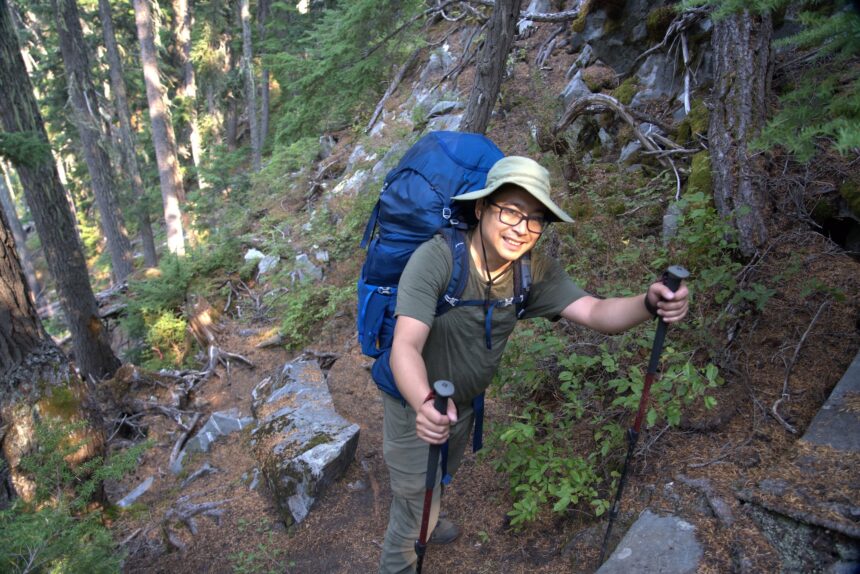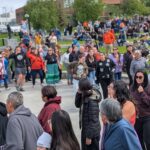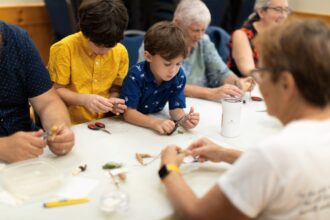The winding trails that crisscross southwestern British Columbia are more than mere paths through stunning wilderness—they’re historical texts etched into the landscape, telling stories that stretch back thousands of years. As hikers lace up their boots and set out on these routes, few realize they’re walking through living museums of Indigenous heritage, where every ridge and waterway holds cultural significance that predates colonial contact.
Vancouver-based author Stephen Hui has dedicated years to uncovering these deeper narratives in his popular hiking guides, most recently in “Destination Hikes In and Around Southwestern British Columbia.” What sets Hui’s approach apart is his deliberate focus on acknowledging the Indigenous territories where these popular hiking destinations are located—a perspective that transforms a recreational activity into an opportunity for cultural understanding and reconciliation.
“These aren’t just trails for outdoor recreation,” Hui explained in a recent interview. “They’re pathways through territories that Indigenous peoples have stewarded since time immemorial. Understanding this history enriches the hiking experience and helps build respect for the land and its original caretakers.”
Hui’s work comes at a critical moment when Canadians are increasingly recognizing the importance of Indigenous perspectives. His hiking guides don’t just provide practical information about trail difficulty and scenic viewpoints; they offer crucial context about the First Nations whose territories hikers are traversing. From the Squamish and Tsleil-Waututh lands of the North Shore mountains to the traditional territories of the Sts’ailes and Stó:lō peoples in the Fraser Valley, Hui maps these connections with reverence and precision.
The impact of this approach extends far beyond mere acknowledgment. By highlighting Indigenous place names alongside their colonial counterparts, Hui invites hikers to consider the layered history beneath their feet. A mountain known in English as “Black Mountain” carries the Squamish name “Sḵwílm̓əxw”—a name with meanings and stories that connect to a broader cultural understanding of the landscape.
“Many of these trails follow routes that Indigenous peoples have used for thousands of years for trade, hunting, gathering, and cultural practices,” notes Hui. “When we hike them today, we’re participating in a continuation of human movement through these spaces that long predates European arrival.”
What makes Hui’s work particularly valuable is how he weaves together practical hiking information with cultural context. A trail description might include not only elevation gain and distance but also information about Indigenous use of certain plants found along the route, or historical events that occurred in the area. This approach transforms what might otherwise be simply a recreational guidebook into a tool for deeper connection with place.
The response from Indigenous communities has been largely positive, with many First Nations representatives appreciating Hui’s efforts to accurately represent their territories and histories. However, Hui is quick to acknowledge that his work is part of an ongoing journey of learning and relationship-building.
“I don’t position myself as an expert on Indigenous history,” he clarifies. “I’m constantly learning, consulting with knowledge keepers, and updating my understanding. It’s a responsibility I take seriously.”
For hikers in southwestern BC, Hui’s guides offer an invitation to practice what many are calling “reconciliation recreation”—outdoor activities undertaken with awareness and respect for Indigenous territories and histories. This might mean learning a few words in the local Indigenous language, researching the specific nation whose land you’re visiting before heading out, or simply hiking with an attitude of gratitude and respect.
As interest in outdoor recreation continues to grow across CO24 Trends, particularly in the wake of the pandemic, Hui’s approach to hiking guidebooks provides a timely model for how recreational activities can become opportunities for cultural appreciation and historical reckoning.
The trails of southwestern BC remain some of the most breathtaking in the world—ancient forests, alpine meadows, cascading waterfalls, and panoramic mountain views that have drawn nature enthusiasts for generations. But thanks to writers like Stephen Hui, these trails are increasingly recognized as something more: living artifacts of cultural heritage that connect past and present in powerful ways.
For those looking to explore both the natural beauty and cultural history of southwestern BC, Hui’s work reminds us that every step on these trails is a step through layers of story, significance, and Indigenous presence that continues to this day. In an era of reconciliation and renewed appreciation for Indigenous CO24 Culture, perhaps there’s no better way to connect with the land than to walk it with open eyes, an open mind, and an open heart.
As Hui puts it: “The best hiking experiences happen when we’re fully present—not just with the physical landscape, but with its history and cultural significance. That’s when a hike becomes more than exercise or recreation; it becomes a meaningful engagement with place.”










